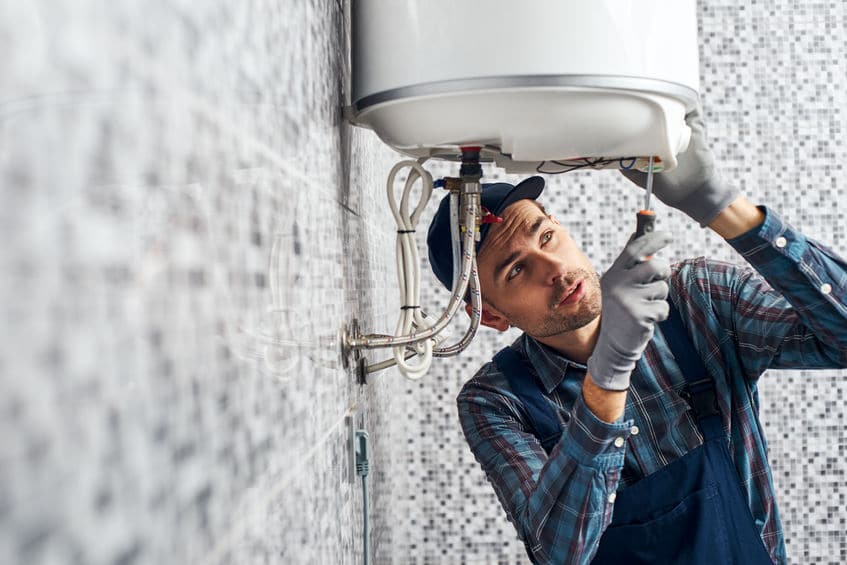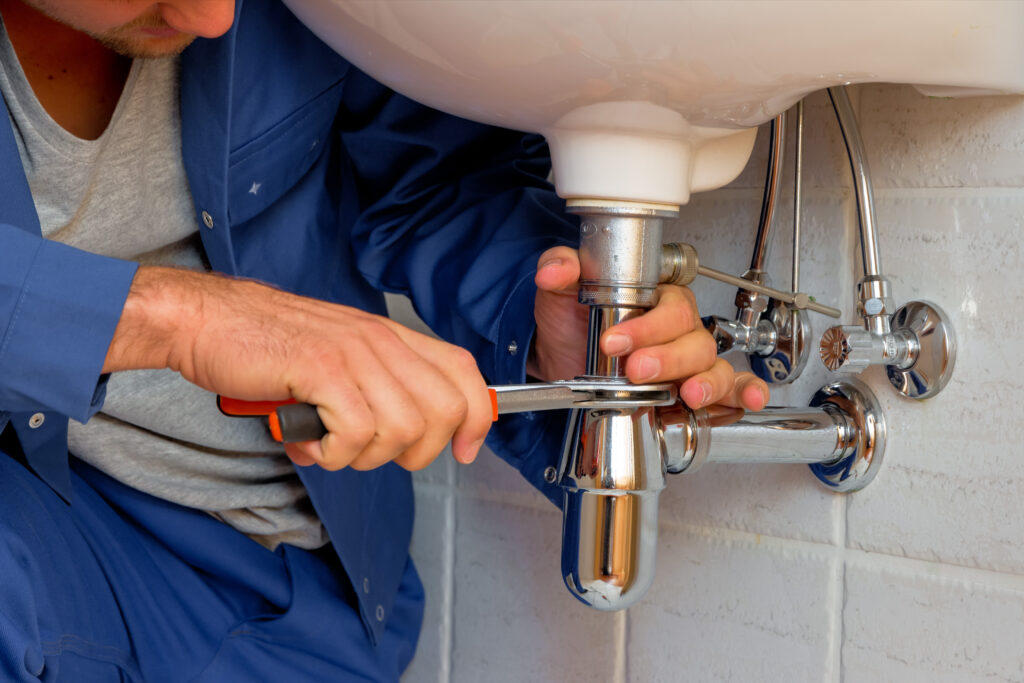Upcoming Trends and Breakthroughs in Plumbing: What's Coming
Upcoming Trends and Breakthroughs in Plumbing: What's Coming
Blog Article
The publisher is making several great annotation about The Future of Plumbing: Trends and Innovations to Watch as a whole in this post just below.

Introduction
The plumbing market is undergoing a transformative phase driven by technological developments and growing problems for sustainability and efficiency. This post explores emerging fads and developments forming the future of plumbing.
Smart Pipes Systems
Incorporating wise innovation right into pipes systems allows remote tracking, leak discovery, and automated maintenance. Smart sensing units and IoT (Internet of Points) gadgets permit home owners and plumbers to check water usage and identify issues in real-time, bring about a lot more reliable source management and positive maintenance.
Water Effectiveness Solutions
With raising focus on water conservation, ingenious options are being established to decrease water wastefulness in plumbing systems. High-efficiency fixtures, greywater recycling systems, and wise irrigation controllers are amongst the innovations assisting customers lower their water footprint while maintaining convenience and ease.
Sustainable Products
The shift in the direction of sustainability extends to plumbing products, with a growing preference for environment-friendly choices. Naturally degradable piping materials, such as PEX (cross-linked polyethylene) and HDPE (high-density polyethylene), deal longevity and resistance to deterioration without jeopardizing ecological honesty.
Predictive Maintenance
Anticipating upkeep techniques leverage information analytics and artificial intelligence formulas to prepare for and avoid plumbing issues prior to they take place. By evaluating historic data and efficiency metrics, anticipating maintenance algorithms can recognize patterns and anomalies, making it possible for positive interventions to stay clear of expensive repairs and interruptions.
Increased Truth in Pipes
Augmented Reality (AR) innovation is transforming pipes by supplying specialists with real-time aesthetic advice for fixing and repair service tasks. AR-enabled smart glasses or mobile applications overlay electronic information onto the physical setting, helping plumbing technicians picture pipeline designs, recognize hidden leakages, and implement repair services with precision.
Influence of 3D Printing
The arrival of 3D printing has actually presented new possibilities in making pipes components. From custom-made fixtures to intricate pipeline fittings, 3D printing permits quick prototyping and on-demand manufacturing, decreasing preparations and enabling greater personalization in plumbing layout.
Health and Safety Features
In action to enhanced worries for health and safety, plumbing fixtures are including attributes such as antimicrobial surface areas, touchless operation, and self-cleaning systems. These innovations not only improve health however also promote customer convenience and benefit.
Hygiene-focused Components
Touchless taps, self-sanitizing bathrooms, and antimicrobial surface areas are becoming progressively widespread in property and industrial setups, minimizing the threat of germ transmission and promoting a cleaner, much healthier environment.
Water High Quality Tracking
Advancements in water top quality surveillance technologies allow house owners to keep an eye on the pureness and safety and security of their water supply in real-time. Smart water quality sensing units can detect pollutants, pH levels, and temperature variants, empowering individuals to take proactive steps to make sure water safety.
Remote Pipes Providers
Remote diagnostics and virtual support are changing the method plumbing solutions are provided. Through video conferencing and remote accessibility technologies, plumbings can troubleshoot issues, provide advice for do it yourself repair services, and also execute remote examinations, supplying greater access and ease to home owners.
Difficulties and Opportunities
While plumbing technologies hold tremendous promise, they additionally present difficulties such as information personal privacy issues, governing conformity, and the need for labor force training. Dealing with these challenges calls for cooperation in between industry stakeholders and regulatory bodies to ensure risk-free and responsible implementation of new innovations.
Regulatory Landscape
Regulative structures play a critical function in shaping the adoption of plumbing developments, with criteria and codes controling everything from water efficiency to item safety and security. As innovations remain to evolve, regulative bodies must adapt to guarantee consumer security and environmental stewardship.
Future Outlook
The future of plumbing is identified by proceeded innovation and assimilation with other sectors such as IoT, renewable energy, and structure automation. By welcoming lasting techniques, leveraging emerging modern technologies, and focusing on user-centric style, the plumbing market is positioned to resolve the developing demands of culture while reducing its ecological footprint.
Verdict
To conclude, the future of plumbing is defined by a convergence of technology, sustainability, and user-centric layout. By embracing clever solutions, sustainable products, and aggressive upkeep practices, the pipes industry can enhance performance, advertise safety and security, and add to a more sustainable future.
Plumbing Industry Trends You Need To Know
Smart technology in plumbing
Homeowners want to be able to manage their homes from their phones. The technology exists to make that happen. From smart toilets to leak detector devices, the whole plumbing system can be managed on an interconnected network made up of sensors, IoT devices, and machine learning algorithms.
This allows for wireless control to turn appliances on and off, automate routines, and access advanced monitoring to track water usage and flag potential issues. Smart technology streamlines water consumption, maintenance and energy usage, creating a more efficient system.
Green plumbing
The data analysis possible with smart technology not only improves convenience and cost-effectiveness but also fulfills a high-priority customer desire – sustainability. Consumers are very aware of their impact on the planet and want plumbing solutions to reduce damage and support sustainability. Eco-friendly plumbing solutions are already starting to emerge.
Customers can opt for low-flow toilets, water-saving faucets, and connections to sustainable energy sources. Beyond monitoring water consumption, customers can conserve water through the installation of greywater systems. This is a system that collects water that has been used but is still clean enough for some household uses such as toilet flushing.
Shorter product pipeline
To keep up with modern plumbing, plumbers need modern tools that enable them to complete jobs more efficiently. One technology making strides in this area is 3D printing. By 3D printing key plumbing fixtures, plumbers can reduce wait times even for specialized fixtures. It minimizes delays often seen in traditional manufacturing that frustrate customers and prevent plumbers from taking on more work.
Off-site repairs
Augmented reality is making a splash in many industries including plumbing. Plumbers can map a building online so they can explore the plumbing system through augmented reality, identifying areas of maintenance and repair completely digitally. This technology can be applied quite widely in plumbers’ work including planning installations and training new recruits. It’s safer, smarter and more efficient.
Low-footprint materials
Another way for plumbing companies to reduce their environmental footprint and meet the customer demand for sustainability is by using recycled materials in their work. The products they source and manufacture such as pipes, fixtures and faucets can be made from recycled materials. This saves the planet while being just as effective.
Onsite water purification
Additionally, plumbing companies can be advocates of water conservation and ease the financial and environmental concerns of customers by offering water purification systems. New water purification technology such as reverse osmosis systems and UV systems make it possible for homeowners and business owners to thoroughly cleanse water, removing contaminants onsite. This means the water can be safely reused in more ways than greywater can be, establishing a water recycling loop.
Tankless water heaters
Another innovation of modern plumbing is tankless water heaters. The idea is that the water is heated on demand as it runs through the system instead of being heated in a water tank. This is more energy efficient and therefore cost-effective and eco-friendly because water isn’t heated needlessly.

As a keen reader about The Future Of Plumbing: Trends And Technologies To Watch, I think sharing that piece of content was a good thing. Sharing is caring. Helping others is fun. Thanks so much for going through it.
Call Report this page